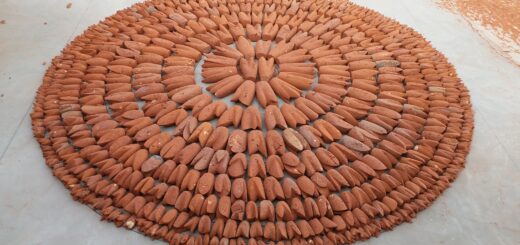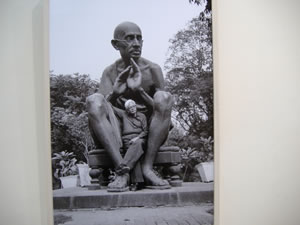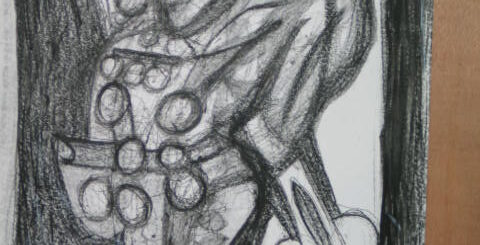The Belgian Embassy: A Masterpiece Revisited / Seema Bawa
This multi domed, arched, brick complex on Shanti Path is not only a landmark that defines the Delhi landscape but is perhaps also a watershed in Indian architecture. As such the Belgian Embassy has evoked heated debate amongst the practitioners of architecture over the period of two decades, since the time of its design in 1980.
Much of the controversy is focussed around the fact that Satish Gujral, its designer is not a professional architect. Going down memory lane, Gujral recalls that his interest in architecture was derived from his engrossment with the mural as a medium of public art. With this came the conviction that a mural, a painting or a sculpture to be successful in a building has to come form a single vision- “breathe from the single lung,” as he puts it. For this he had to design the building himself. In order to achieve this “I started to assist the architects of projects in which I was doing the murals, ” reminiscences Gujral. His early training in the Lahore art institution also came in handy where the curriculum had included draughtsmanship, carpentry, metalwork and the like.
With this came the conviction that instead of bringing art to the public place as through a mural, the need was to make the public place a work of art by itself. So after designing few residences, he submitted his design in a competition to build the Belgian Embassy in Chankyapuri in New Delhi.
The Embassy unlike most buildings is not oriented to the center of the plot. Instead the four major units are in all corners of the semi triangular shaped plot- the Ambassadors Residence, the Chancery, the Counsel’s’ residence and the servant quarters. “By placing them in this way I created a tension between the buildings,” explains Gujral. In the middle is a landscaped courtyard, what Dr.R S Sodhi, an eminent planner and expert on large complex designs, calls the veda , the baramda, or a cul de sac that epitomizes the north Indian village.
In fact, the complex has a rather late Mughal feel to it. Originally the jury that awarded the project had felt that this Indianness was a drawback and that the Embassy should reflect the character of Belgium. But the Premier intervened and said that for him this was a qualification. Commenting on the influence of globalization on architectural practice, Gujral says “modern architecture is built for nowhere and speaks of nowhere. But building is like a human being – it has its own identity and provides an identity to its inhabitants.” According to Arjun Thapar, an architect who teaches at the School of Planning and Architecture ”The Embassy is not a pure building rather is architecture that reflects an artist’s thinking and personality.”
“When I sat down to design it, it was like I paint, without conscious thought that I want it to be like this or that- emotion finds its style. I introduced a sculptural element that was natural with my background. Where I used conscious thought was in the planning,” says Satish Gujral.
Sodhi concurs “the Belgian Embassy is a sculptural form, specially from the outside. Moving inside is like moving through sculptured space.” Herein lies the problem. “ Probably after having conceived of the form, Gujral didn’t want to compromise with it and was therefore not able to plan the openings, windows and doors, “ he clarifies adding “ we architects feel that form of the building should emerge form the foundations and function rather then vice versa.”
Gujral however feels that “professionals always abuse the non-professionals, and talk about techniques. It is only in the modern times that the divorce between architecture, sculpture and painting has taken place.”
“Visiting the Belgian Embassy is like visiting as museum. It is not like a regular office space.” Unlike other embassy structures in the Diplomatic Enclave, this is not cold and intimidating. “It is like an oasis amongst many other ugly and hostile structures. Open, friendly and non-intimidating,” says Thapar.
Placing it in context of history of design Thapar feels that it made architectural history, in the manner it broke norms of office buildings. Sodhi agrees and says that it was probably the first time that exposed bricks were used for a formal building, bricks were usually considered and informal medium. The use of exposed bricks however was not new, considered that Le Corbusier had built almost the entire Chandigarh with this look. Bricks are also problem material because they allow for leakage unless until the roofing has been properly treated, especially in context of the Embassy the wall merges into the roof shaped like a dome, explains Sodhi.
The designer remarks that “in the 15 years of its existence its importance has grown around the world.” The best encomium for the Belgain Embassy is proabably provided by Gujral himself, “If Michaelanglo’s Sistine Chapel could survive for so many centuries, why the Belgian Embassy would not.”











